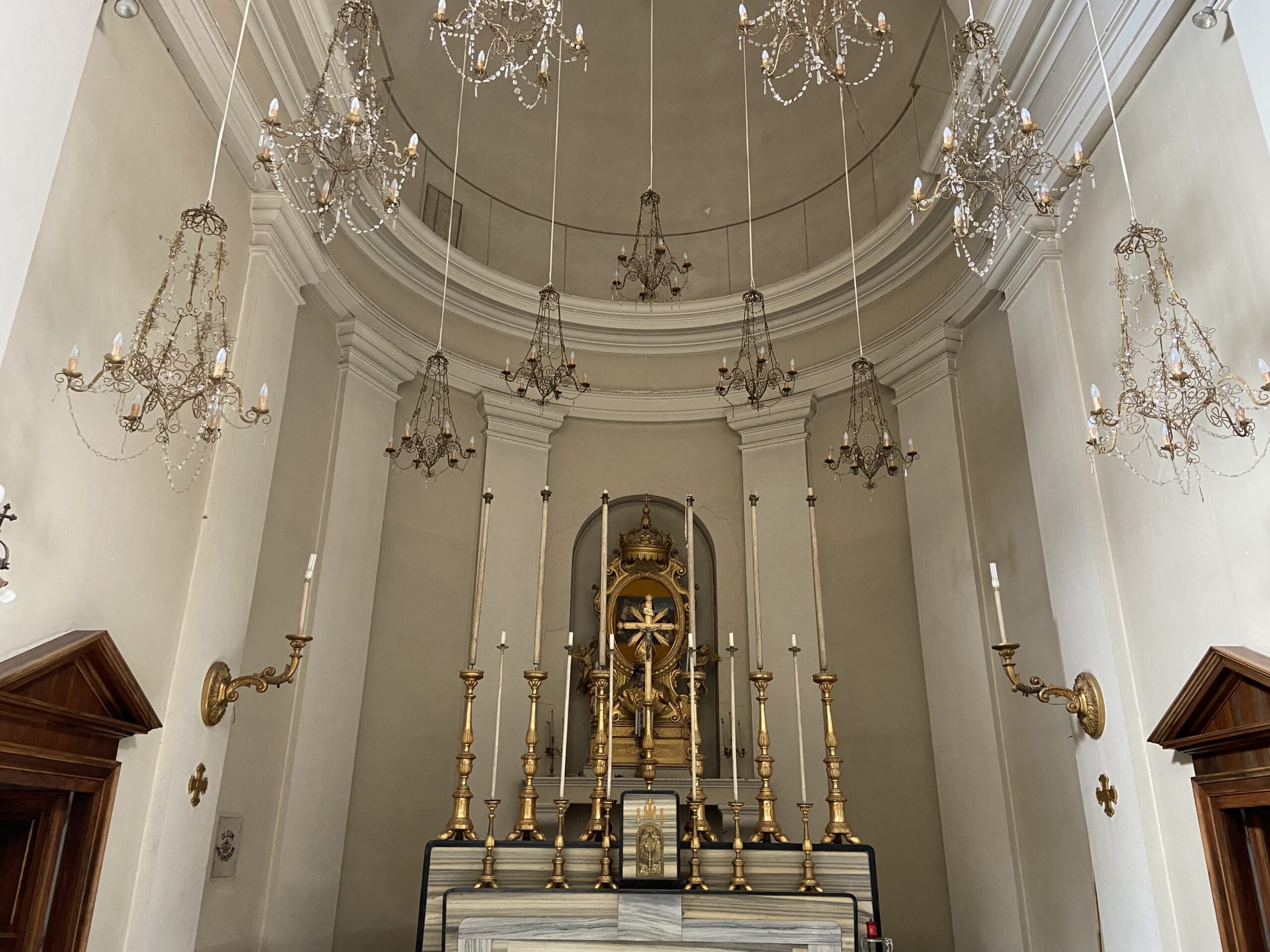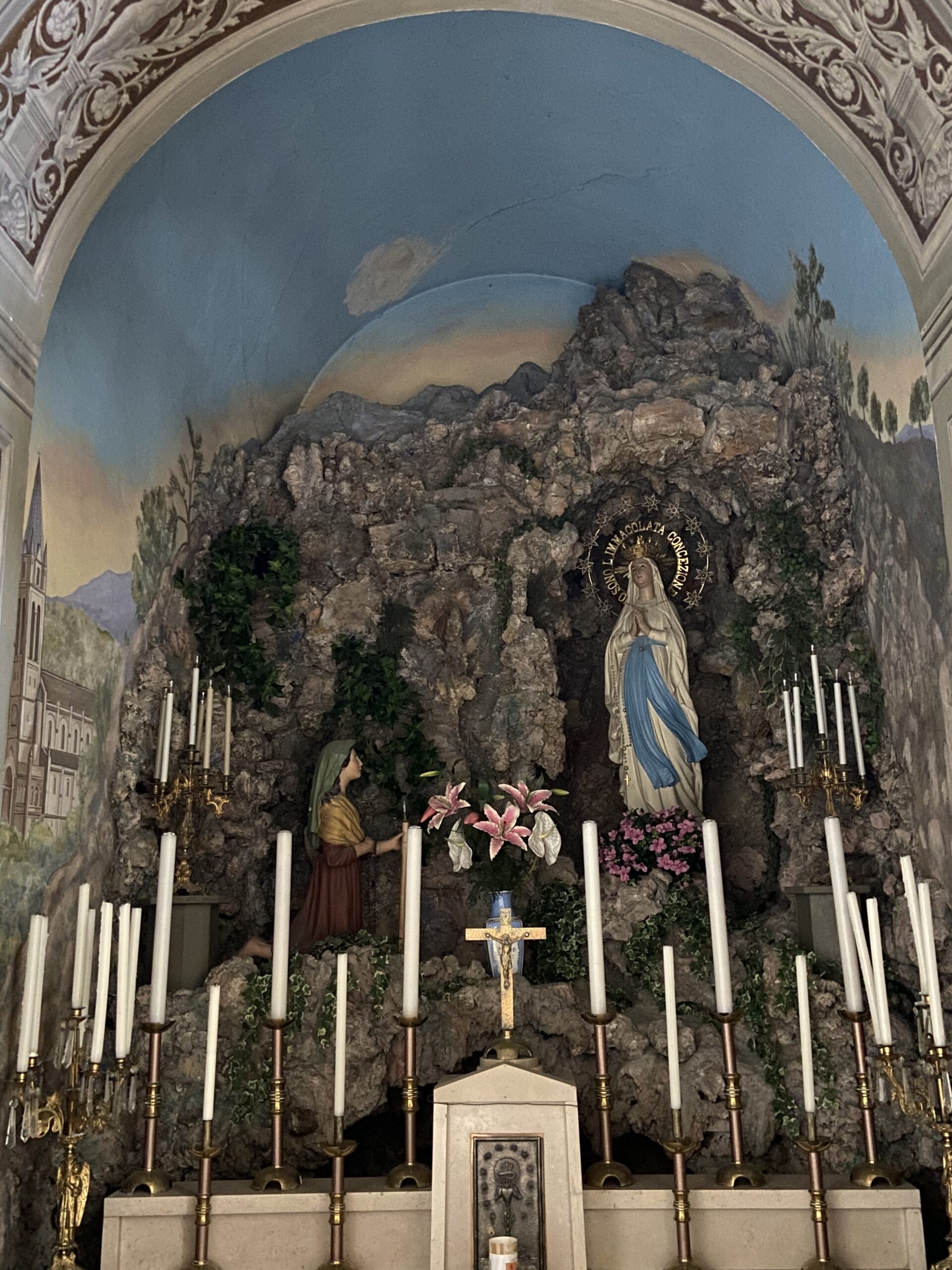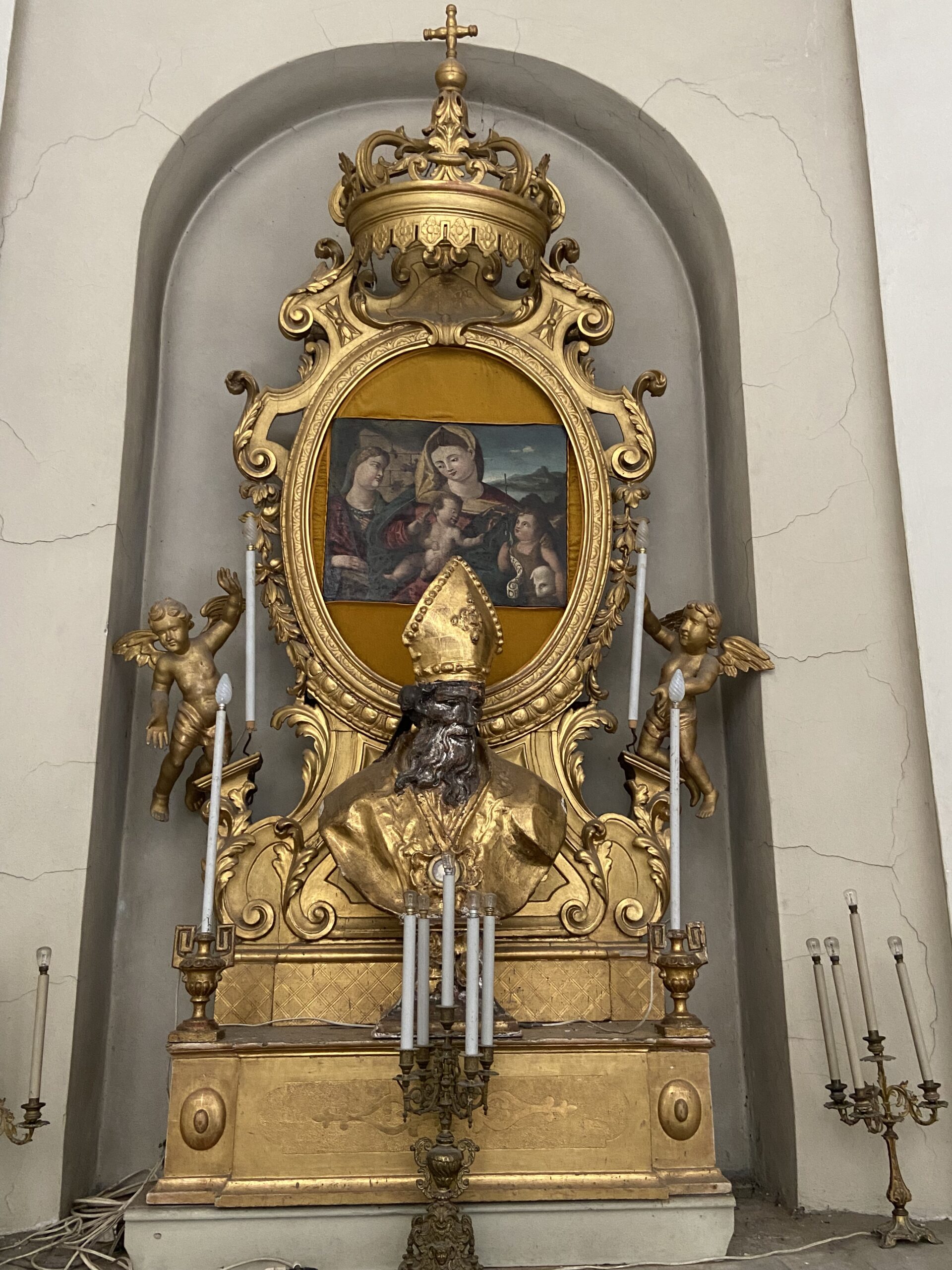The church of Santa Maria della Valle was rebuilt in neoclassical style at the turn of the 19th and 20th centuries, tearing down the old one, which was cramped and badly reduced; the façade, with its concrete portal, was redone in 1903, demolishing the three arches of the portico, and the interior in 1904; the bell tower, raised next to the apse, was completed in 1921; it is 18 meters high and has three bells. Restoration work was carried out in the church in 1973-74, 1993 (roof), 1996 (sacristy). After the construction of the chapel of Our Lady of Lourdes and the chapel of Our Lady of Seven Sorrows or Our Lady of Sorrows (left aisle), the interior is basically a single nave, with pronounced transept, at the center of which rises a dome of modest size
Starting from the right, you can admire there: the 14 Stations of the "Way of the Cross" (18th cent.); the polychrome wooden crucifix from the second half of the 17th century, from the parish church of San Nicolò; above, small painting depicting St. Anthony of Padua a devotional from the 18th cent. 18th cent.); the chapel of Our Lady of Lourdes (1905, designed by Luigi Campanelli, also author of the small statue dl Bernadette Soubirous), renovated or 1958 and painted by Quinto Tizi; the decorated statue of Our Lady depicting the Immaculate Conception of Lourdes according to traditional iconography; above, on the front wall, 16 votive offerings and a small oval canvas depicting Our Lady of Milk (late 17th cent. 17th cent.); continuing, above the arch, on the right wall of the transept, canvas depicting St. Francis Xavier (devotional painting, 17th-18th cent.); altar of St. Joseph with the statue of the same name (early 20th cent. devotional art); in the corner, Our Lady of Loreto with the little house (polychrome wooden group, early 20th cent. 19th century); above the access door to the bell tower, canvas of substantial size (cm. 110 x 120), depicting the Immaculate Conception (imitation by Guido Reni. early sec. 18th cent.); in the apse, altar renovated in 1950 in cipollino and serpentine marble (designed by architect Emidio Ciucci); in the center of the apse wall, painted panel (with gilded Baroque trunk), called St. Maria delle Grazie (to the left of the Virgin, St. Catherine of Alexandria, to the right, St. John the Baptist), by an unknown 16th-century artist; above the door leading to the sacristy, canvas (130 x 180 cm) depicting St. Nicholas of Bari blessing four children (in fine clothes): devotional art of the sec. 17th century; in the altar of the left transept is a statue of the Sacred Heart, donated by the Catholic University of Milan of the same name at the beginning of the 20th century; continuing, above the arch of the same transept, canvas depicting St. Catherine of Siena (second half of the 17th century); large processional cross called "Tronco" (exhibited in 2002), probable work of the sec. 19th century; "The Way to Heaven," a nativity composition, executed in 1946 in polychrome terracotta by Cleto Capponi, author also (1962) of the ceramic on which is a copper embossing depicting the Baptism of Jesus, applied on the wall of the Baptismal Font (renovated in 1960); above is a small canvas with the Baptism of Jesus (early 18th century). The wooden chancel has a liturgical organ built in 1906 by the Bologna firm Adriano Verati, whose black-and-white decorations were probably done by Ripan painter Don Luigi Sciocchetti. In the sacristy, a rather modest room whose pictorial ceiling decorations were executed by Quinto Tizi, devotional paintings are kept, such as: St. Bonaventure, patron saint of the Confraternity of the Blessed Sacrament (19th-century cloth paper); the Saint Curé d'Ars, executed in 1930 by Umberto Gradari of Pesaro; St. Gabriel of Our Lady of Sorrows (19th century).


